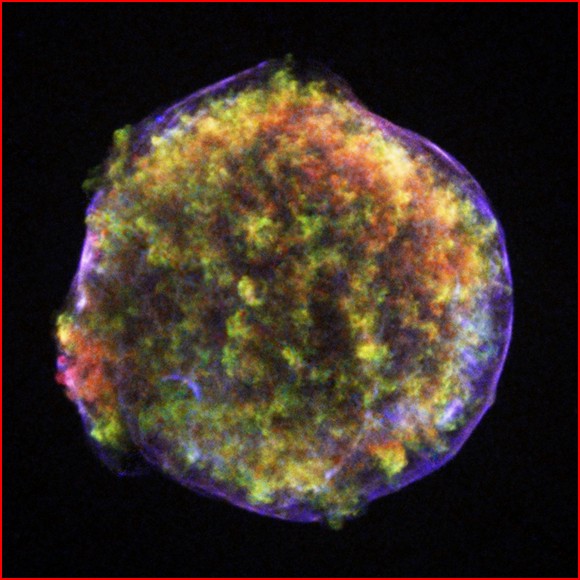
Love this “doesn’t defy this law.”
Maybe something comes out that will cause these “laws” to have to be rewritten, or maybe thrown out entirely.
They make it sound like as long as it doesn’t defy a law, it’s allowed.
The physics as we understand them are as defined by our understanding. Things may change...be prepared as I always say ...
https://www.youtube.com/watch?v=5WYUNHeftrM&index=15&list=RDDJZYdlBwgCU
...the EM drive uses electromagnetic waves as fuel...Perhaps I missed it -- What produces the electromagnetic waves? I didn't see that stated in the article.
“Alpha Centauri, in just 92 years”
Only 92 years? What would they do if they got there and there were no habitable planets?

I read Arthur C. Clarke's story in Boys Life in 1964!
"Sunjammer" is a science fiction short story by Arthur C. Clarke, originally published in 1963, and included in the March 1964 issue of Boys' Life.
(from Wikipedia)
History of conceptP> Johannes Kepler observed that comet tails point away from the Sun and suggested that the Sun caused the effect. In a letter to Galileo in 1610, he wrote, "Provide ships or sails adapted to the heavenly breezes, and there will be some who will brave even that void." He might have had the comet tail phenomenon in mind when he wrote those words, although his publications on comet tails came several years later.[3]
James Clerk Maxwell, in 1861–64, published his theory of electromagnetic fields and radiation, which shows that light has momentum and thus can exert pressure on objects. Maxwell's equations provide the theoretical foundation for sailing with light pressure. So by 1864, the physics community and beyond knew sunlight carried momentum that would exert a pressure on objects.
Jules Verne, in From the Earth to the Moon,[4] published in 1865, wrote "there will some day appear velocities far greater than these [of the planets and the projectile], of which light or electricity will probably be the mechanical agent ... we shall one day travel to the moon, the planets, and the stars."[5] This is possibly the first published recognition that light could move ships through space.
Pyotr Lebedev was first to successfully demonstrate light pressure, which he did in 1899 with a torsional balance;[6] Ernest Nichols and Gordon Hull conducted a similar independent experiment in 1901 using a Nichols radiometer.[7]
Albert Einstein provided a different formalism by his recognizing the equivalence of mass and energy. He simply wrote p = E/c as the relationship between the momentum, the energy, and the speed of light.
Svante Arrhenius predicted in 1908 the possibility of solar radiation pressure distributing life spores across interstellar distances, providing one means to explain the concept of panspermia. He apparently was the first scientist to state that light could move objects between stars.[8]
Friedrich Zander (Tsander) published a technical paper in 1925 that included technical analysis of solar sailing. Zander wrote of "using tremendous mirrors of very thin sheets" and "using the pressure of sunlight to attain cosmic velocities".[9]
Konstantin Tsiolkovsky first proposed using the pressure of sunlight to propel spacecraft through space and suggested, "using tremendous mirrors of very thin sheets to utilize the pressure of sunlight to attain cosmic velocities".[10]
JBS Haldane speculated in 1927 about the invention of tubular spaceships that would take humanity to space and how "wings of metallic foil of a square kilometre or more in area are spread out to catch the Sun's radiation pressure".[11]
J.D. Bernal wrote in 1929, "A form of space sailing might be developed which used the repulsive effect of the Sun's rays instead of wind. A space vessel spreading its large, metallic wings, acres in extent, to the full, might be blown to the limit of Neptune's orbit. Then, to increase its speed, it would tack, close-hauled, down the gravitational field, spreading full sail again as it rushed past the Sun."[12]
The first formal technology and design effort for a solar sail began in 1976 at Jet Propulsion Laboratory for a proposed mission to rendezvous with Halley's Comet.[2]
a tiny effect with no practical applications, if that
Cool, a photon drive!
Now when they can eliminate the Romleons with a photon Torpedo I’ll be impressed.
It actually shinnies up gravitational waves like a rope-climber. :-]
Oh goody...the first guy postulates what is essentially a maser and wants to claim some work product from the internal cavity.....yawn....delusion is hard to knock down
Seems to me that since energy conservation must hold that a measurement of the energy sources and sinks should be enough to validate the theory.
Am I over simplifying the problem?
Light as in visible light frequencies or microwaves as in microwave frequencies? Both electromagnetic waves of course, but vastly different frequencies as commonly termed.
P!ss poor phrasing if it came from a scientist.

If you want on or off the Electric Universe Ping List, Freepmail me.
“...it’s also the idea that Bill Nye’s solar sail is based on.” Bill Nye the science guy? He wasn’t born when the solar sail was conceived.